Zone scolaire et résidentielle
- 1/19The speed limit in school zones in Nunavut
In Nunavut, the speed limit in school zones is posted on the signs. If the speed is not posted, you must drive at a reduced speed.

A pedestrian-activated crosswalk sign with a flashing light indicates that a pedestrian may be entering or in the crosswalk. Drivers must be prepared to stop if the light is flashing to yield to pedestrians.
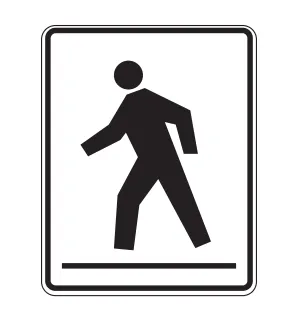
At any pedestrian crosswalk, drivers are required to yield the right-of-way to pedestrians who are crossing or are about to cross the roadway. This ensures pedestrian safety.
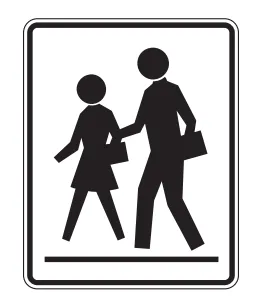
At a school crosswalk, drivers must yield to pedestrians. If a crossing guard is present, it is mandatory to follow their directions, as they manage the safe passage of students.
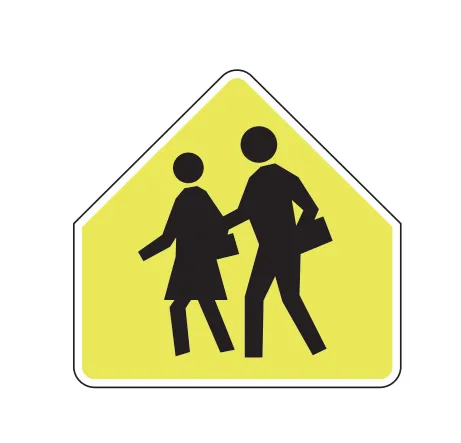
This yellow diamond-shaped sign indicates a school zone. It serves as a warning to drivers to reduce their speed and be extra cautious, especially when children are present on or near the roadway.
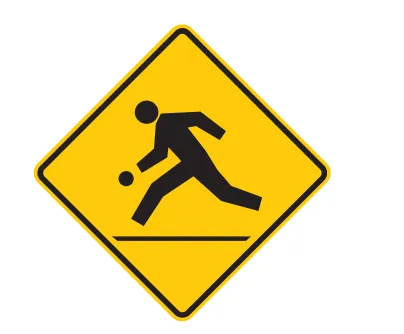
This sign indicates that a playground is nearby. Drivers seeing this sign should be prepared to slow down and exercise caution, as children may be present and could enter the roadway.
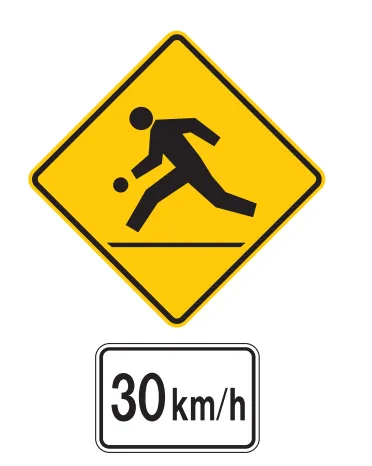
The 30 km/h speed limit in a playground zone is enforced every day from dawn to dusk. This regulation provides consistent protection for children during typical play hours.
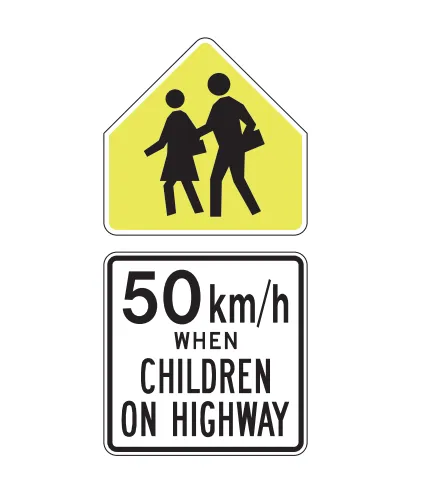
This sign specifies that the 50 km/h limit in the school zone is active on school days. This reduction in speed is crucial for the safety of children who may be on the roadway or shoulder during those hours.
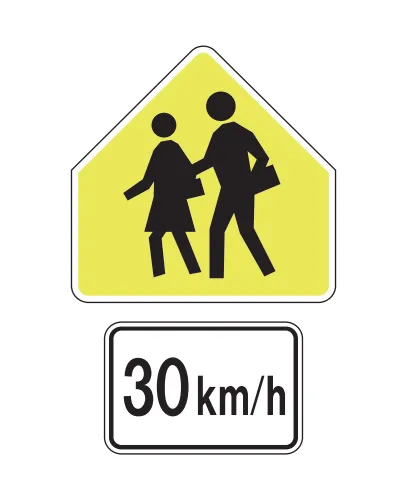
When a school zone sign has a tab that only displays the speed limit (e.g., 30 km/h), that limit is generally in effect every day for 24 hours unless otherwise sign is posted. This ensures slower speeds during peak school activity times.

When a school zone sign tab specifies 8 AM - 5 PM SCHOOL DAYS, the 30 km/h limit is precisely in effect during those hours and only on days when school is in session. Drivers must adhere to these specific times.

This yellow diamond-shaped sign serves as a warning to drivers. It indicates that there is a school bus stop up ahead, alerting drivers to the potential presence of children getting on or off a school bus on the roadway.
The speed limit in residential zones in Nunavut
In Nunavut, the speed limit in built-up areas is 50 km/hr (30 mph). This standard limit applies to urban and residential areas to manage traffic and pedestrian safety.
It is especially important to observe carefully when driving in school and playground zones because
Children, especially smaller ones, can be difficult to see and may move in unpredictable ways. Exercising careful observation in these zones helps prevent accidents due to their presence.
When approaching a school zone during times when children may be arriving or leaving
During active school hours, drivers should specifically look out for school patrols or crossing supervisors. It is mandatory to obey their directions at all times to ensure the safe passage of children.
The indication of a ball or a hockey net on the street in residential areas
Items like a ball or a hockey net in a residential area are clues that children may be playing nearby. Drivers should be especially vigilant as children can move unpredictably into the roadway.
The crucial check a driver should perform before getting into their car to back up
Before beginning to back up, it is essential to check the area immediately surrounding your car. This helps ensure that no children, pets, or objects are in your path before you start moving.
A school bus with alternating flashing amber lights means
Alternating flashing amber lights on a school bus are a warning signal to drivers. They indicate that the bus is about to stop to pick up or drop off children, so drivers should prepare to stop.
If you encounter a school bus with alternating flashing red lights at the top
When a school bus displays alternating flashing red lights, it signifies that children are entering or exiting the bus. Drivers must stop their vehicles, regardless of whether they are approaching the bus from the front or the rear.
The vehicles that must stop when a school bus has alternating flashing red lights
The rule for a school bus with flashing red lights requires all vehicles in all lanes to stop. This ensures a safe zone around the bus for children crossing the road, regardless of their direction of travel.
 Fin des ventes flash
Fin des ventes flash  Obtenir l'abonnement est seulement
Obtenir l'abonnement est seulement 



